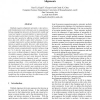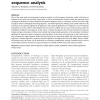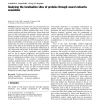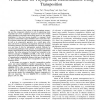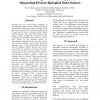29 search results - page 5 / 6 » Bioinformatics - an introduction for computer scientists |
SSDBM
2006
IEEE
14 years 5 months ago
2006
IEEE
Multiple sequence alignment represents a class of powerful bioinformatics tools with many uses in computational biology ranging from discovery of characteristic motifs and conserv...
BIB
2006
13 years 11 months ago
2006
One of the major goals of computational sequence analysis is to find sequence similarities, which could serve as evidence of structural and functional conservation, as well as of ...
NCA
2006
IEEE
13 years 11 months ago
2006
IEEE
Scientists involved in the area of proteomics are currently seeking integrated, customised and validated research solutions to better expedite their work in proteomics analyses and...
BIBE
2007
IEEE
14 years 5 months ago
2007
IEEE
Abstract—Because of the advent of high-throughput sequencing and the consequent reduction in cost of sequencing, many organisms have been completely sequenced and most of their g...
CSB
2005
IEEE
14 years 4 months ago
2005
IEEE
Scientists face an ever-increasing challenge in investigating biological systems with high throughput experimental methods such as mass spectrometry and gene arrays because of the...
